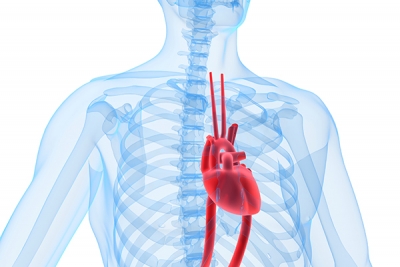
The chest houses the two powerhouse organs that keep the body running – the heart and lungs. All the body’s cells are supplied with essential blood and oxygen thanks to these vital organs. The backbone supports the body and protects the spinal column, which carries messages to and from the brain.
The chest wall is comprised of skin, fat, muscles, and the thoracic skeleton. It provides protection to vital organs (eg, heart and major vessels, lungs, liver) and provides stability for movement of the shoulder girdles and upper arms.
One important organ in the chest is the thymus, a small butterfly-shaped organ located between the heart and the sternum, or breastbone. This organ belongs to the immune system, and its job is to produce T cells, a type of white blood cell. These are formally known as T lymphocytes; the “T” stands for thymus, where the cells originate.
Picture Credit : Google
